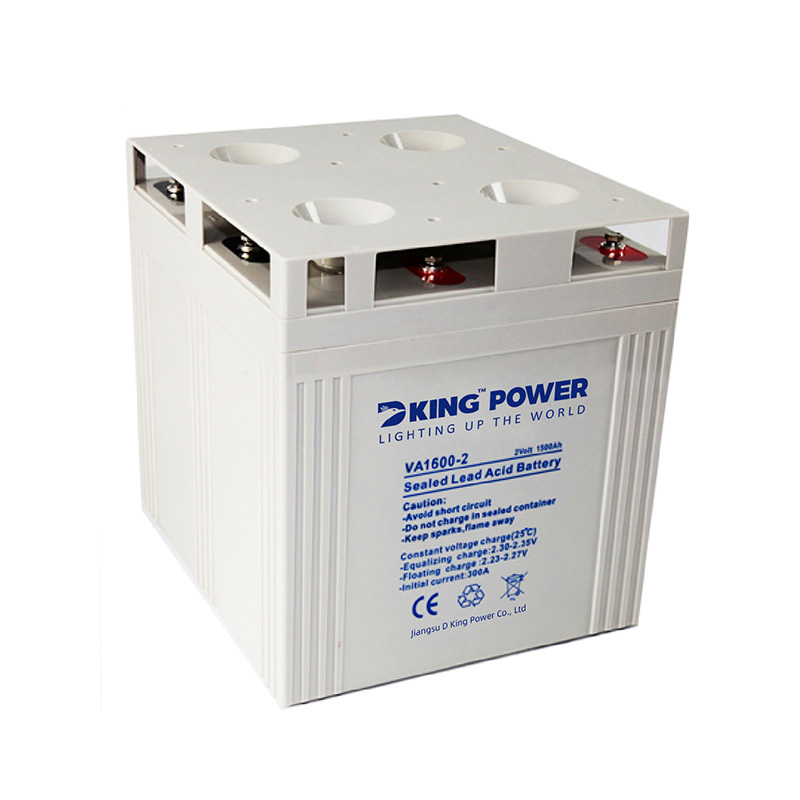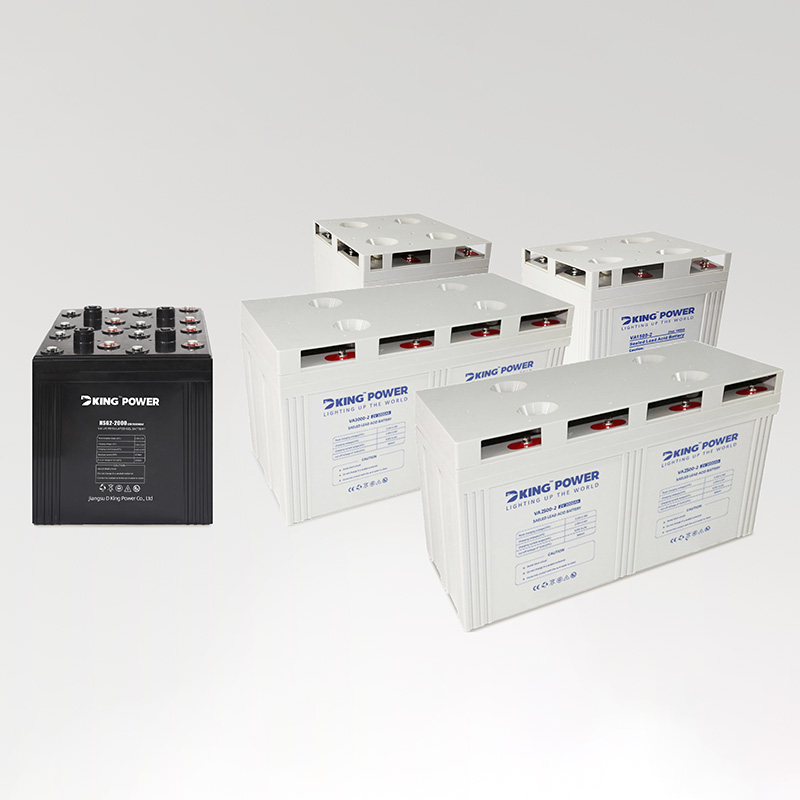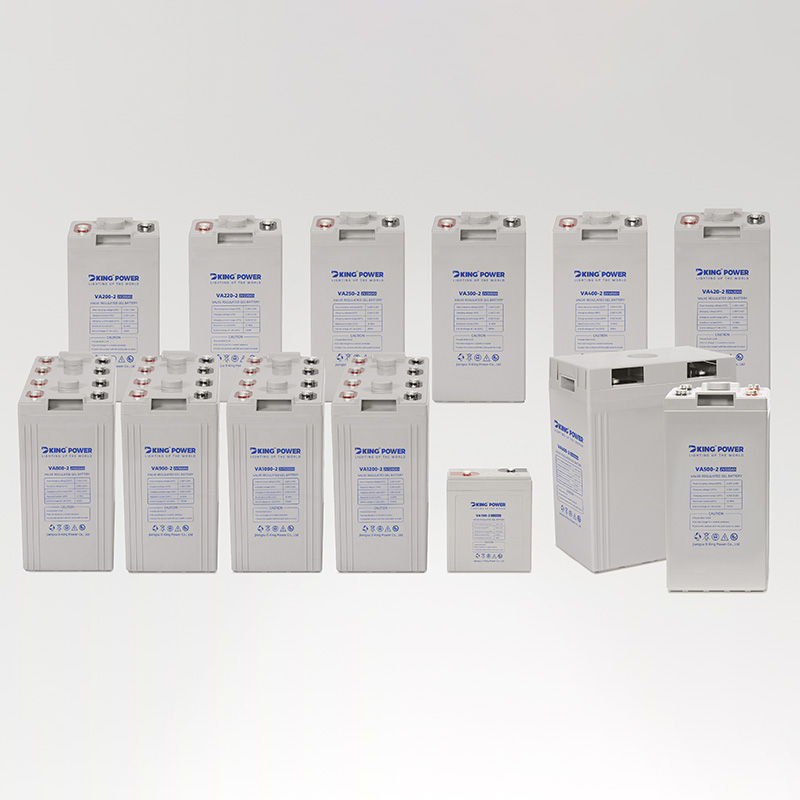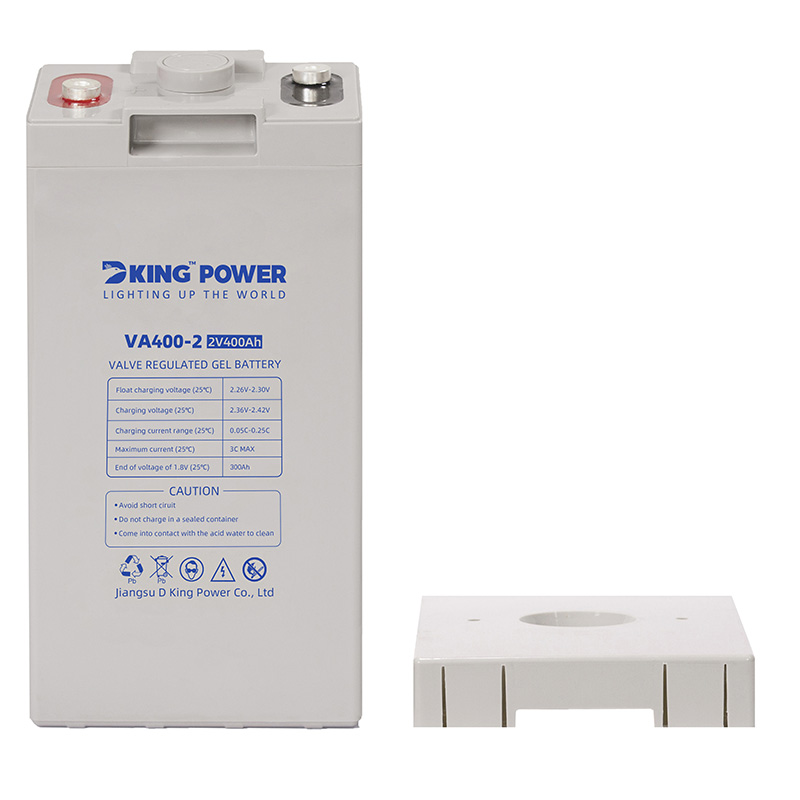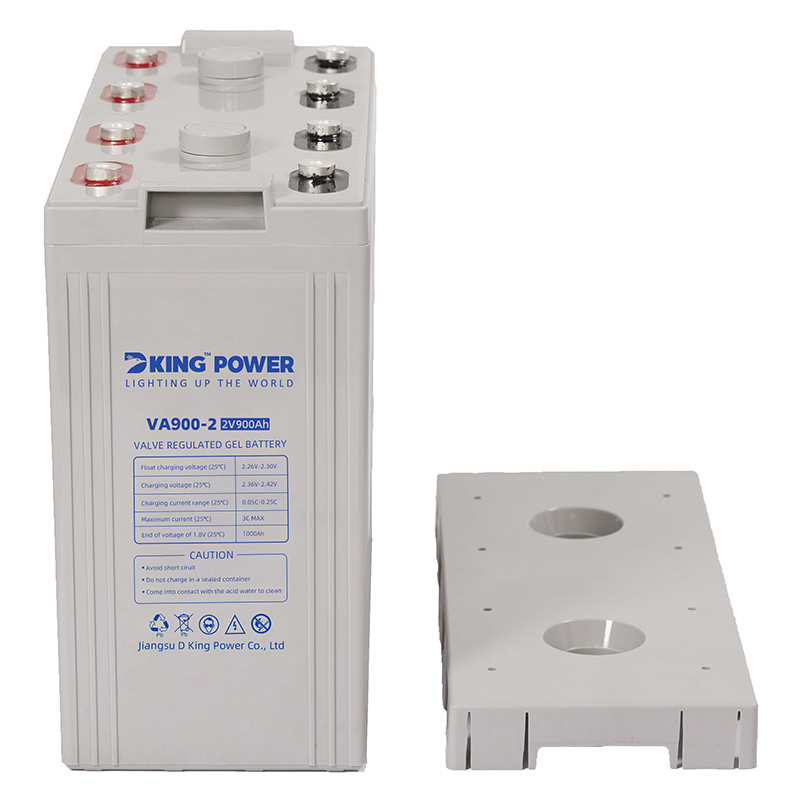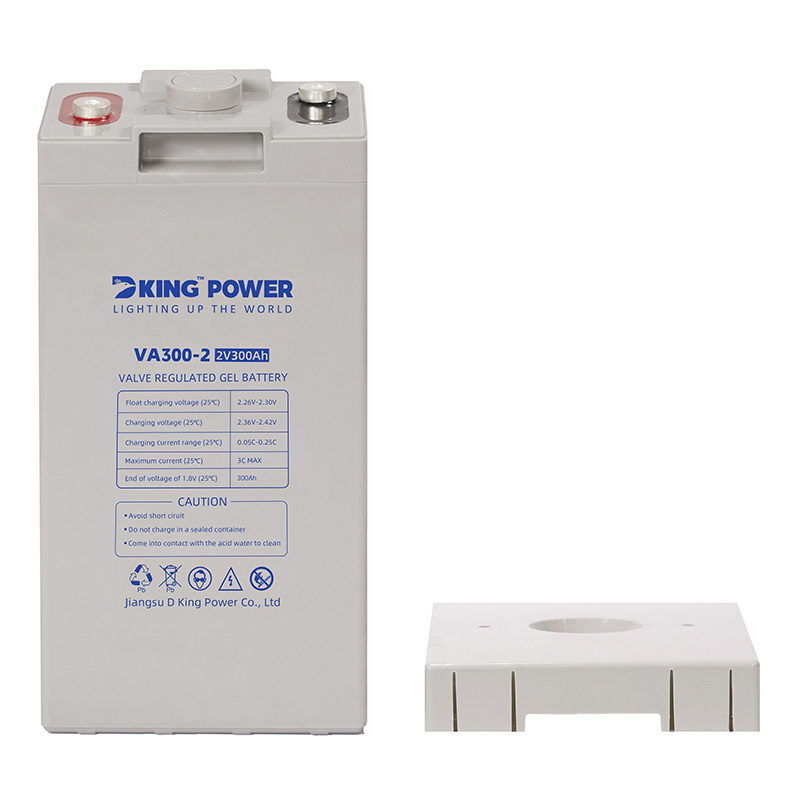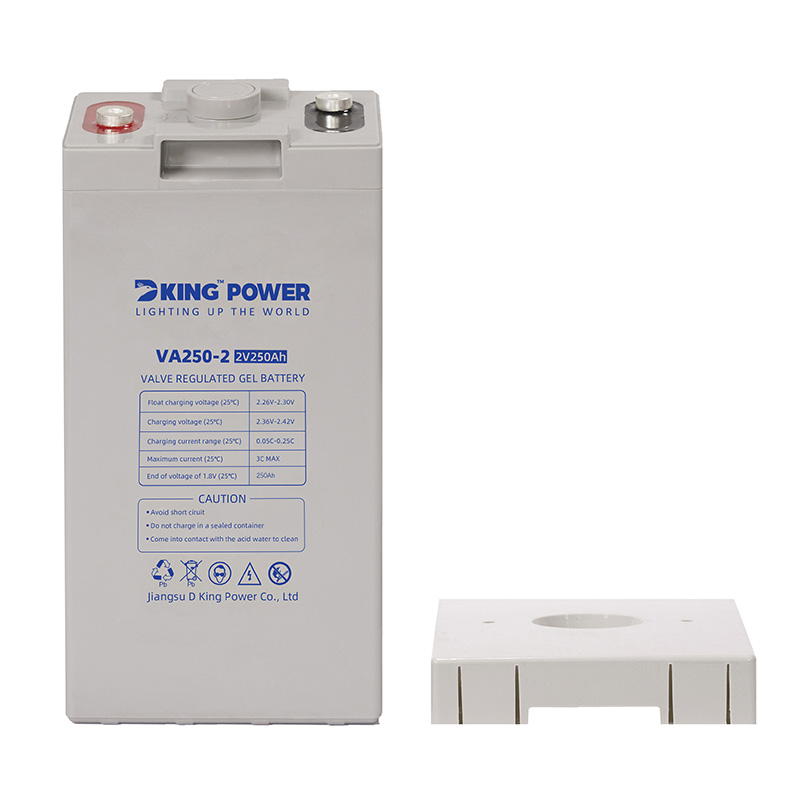DKGB2-1600-2V1600AH SEALED GEL LEAD ACID BATTERY
Technical Features
1. Charging efficiency: The usage of imported low resistance raw materials and advanced process help make theinternal resistance smaller and the acceptance ability of small current charging stronger.
2. High and low temperature tolerance: Wide temperature range (lead-acid:-25-50 C ,and gel:-35-60 C), suitablefor indoor and outdoor use in varies environments.
3. Long cycle-life: The design life of lead acid and gel series reach to more than 15 and 18 years respectively, forthe arid is corrosion- resistant. and electrolvte is without risk of stratification by using multiple rare-earth alloy ofindependent intellectual property rights, nanoscale fumed silica imported from Germany as base materials, andelectrolyte of nanometer colloid all by independent research and development.
4. Environment-friendly: Cadmium (Cd), which is poisonous and not easy to recycle, does not exist. Acid leakageof gel electrolvte will not happen. The battery operates in safety and environmental protection.
5. Recovery performance: The adoption of special alloys and lead paste formulations make a low self-dischargerate, good deep discharge tolerance, and strong recover capability.

Parameter
|
Model |
Voltage |
Capacity |
Weight |
Size |
|
DKGB2-100 |
2v |
100Ah |
5.3kg |
171*71*205*205mm |
|
DKGB2-200 |
2v |
200Ah |
12.7kg |
171*110*325*364mm |
|
DKGB2-220 |
2v |
220Ah |
13.6kg |
171*110*325*364mm |
|
DKGB2-250 |
2v |
250Ah |
16.6kg |
170*150*355*366mm |
|
DKGB2-300 |
2v |
300Ah |
18.1kg |
170*150*355*366mm |
|
DKGB2-400 |
2v |
400Ah |
25.8kg |
210*171*353*363mm |
|
DKGB2-420 |
2v |
420Ah |
26.5kg |
210*171*353*363mm |
|
DKGB2-450 |
2v |
450Ah |
27.9kg |
241*172*354*365mm |
|
DKGB2-500 |
2v |
500Ah |
29.8kg |
241*172*354*365mm |
|
DKGB2-600 |
2v |
600Ah |
36.2kg |
301*175*355*365mm |
|
DKGB2-800 |
2v |
800Ah |
50.8kg |
410*175*354*365mm |
|
DKGB2-900 |
2v |
900AH |
55.6kg |
474*175*351*365mm |
|
DKGB2-1000 |
2v |
1000Ah |
59.4kg |
474*175*351*365mm |
|
DKGB2-1200 |
2v |
1200Ah |
59.5kg |
474*175*351*365mm |
|
DKGB2-1500 |
2v |
1500Ah |
96.8kg |
400*350*348*382mm |
|
DKGB2-1600 |
2v |
1600Ah |
101.6kg |
400*350*348*382mm |
|
DKGB2-2000 |
2v |
2000Ah |
120.8kg |
490*350*345*382mm |
|
DKGB2-2500 |
2v |
2500Ah |
147kg |
710*350*345*382mm |
|
DKGB2-3000 |
2v |
3000Ah |
185kg |
710*350*345*382mm |

production process

Lead ingot raw materials
Polar plate process
Electrode welding
Assemble process
Sealing process
Filling process
Charging process
Storage and shipping
Certifications

More for reading
Charge and discharge test of storage battery
Purpose of charging and generating test
Through the regular charging and discharging test of the battery pack, its performance can be improved, its excitation capacity can be increased, its service life can be extended, and faulty batteries can be found and handled in time to prevent the problem from expanding.
Meet the conditions of regular charge discharge test
1. The battery is not used for more than three months;
2. Floating charge voltage of single battery is lower than 2.18V;
3. The battery releases more than 15% of the rated capacity;
4. The battery has operated in floating charge state for more than one year;
5. Replace some batteries with low capacity;
6. The battery shall be subject to check discharge once a year to discharge 40-50% of the rated capacity;
7. The capacity test shall be conducted for the storage battery every 3 years to release 80% of the rated capacity.
Charging and discharging test scheme of storage battery
1. First, conduct 0.1C10 constant current discharge on the storage battery. If the voltage of a single battery drops to 1.8V, terminate the discharge;
2. Then carry out 0.1C10 constant current charging. When the average monomer voltage rises to 2.25-2.35V, it will turn to floating charging state.
Discharge current and time
1. The resistance constant current method is used for discharge, and the discharge current shall not exceed the current rate of 10 hours. Taking the battery capacity of 200Ah as an example, the discharge current is 0.1C10, that is, 20A;
2. Discharge time: calculated by 40% of rated discharge capacity, t=40% * 200/20=4h; 3. After the discharge, the battery shall be charged and cannot be put aside.
Daily operation mode of DC system
1. The charger module runs parallel with the battery on the DC bus;
2. The 400V AC power supply supplies power to all loads on the DC bus through the charging module, while floating charging the battery.

